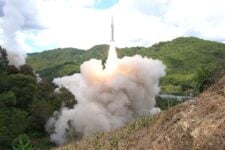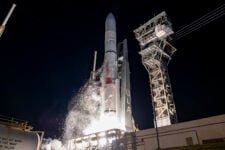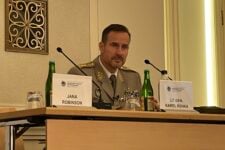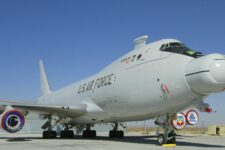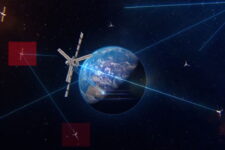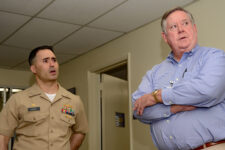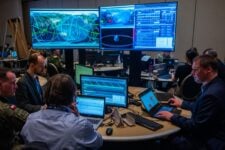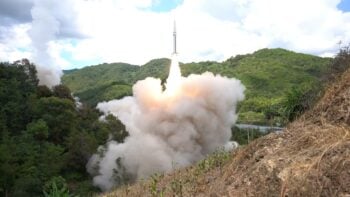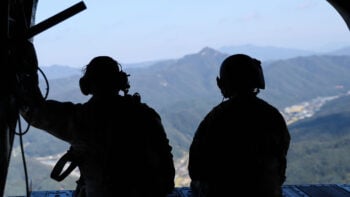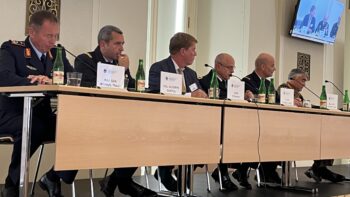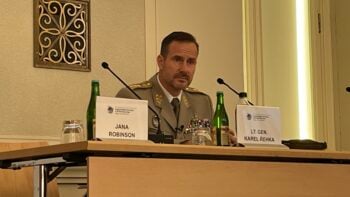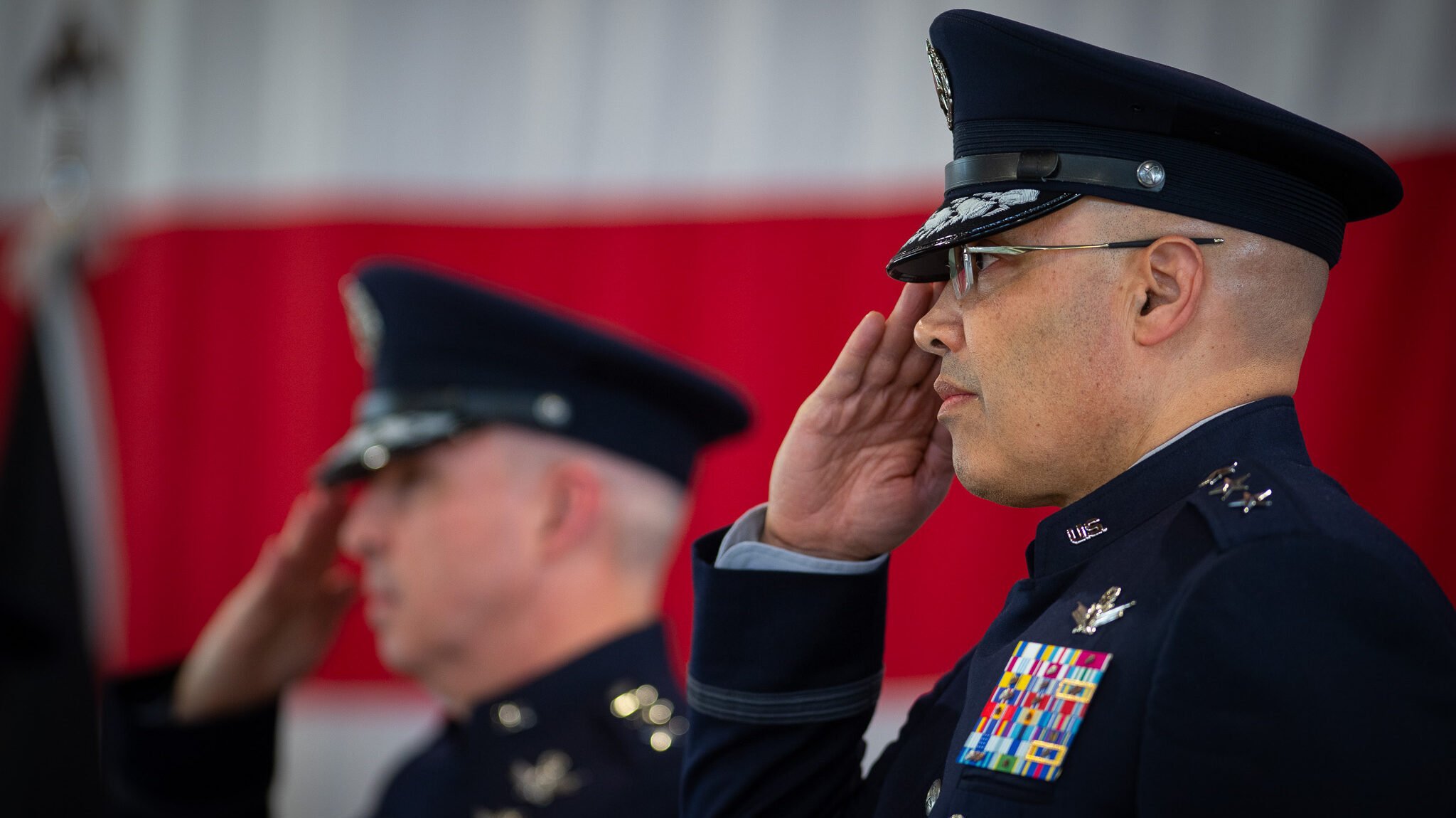
Lt. Gen. David Miller assumed command of Space Operations
Command on Jan. 9, 2024. (US Space Force photo by Dennis Rogers)
WASHINGTON — If Lt. Gen. David Miller, the new head of Space Operations Command (SpOC), had a watchword, it would be “integration” — in how Guardians implement Space Force missions, work with acquisition specialists to bring new kit into the field, and, lastly, train to meet current and future threats.
“The real secret sauce in generating readiness — both the standards for warfighting in a contested environment, but also the quality and quantity of forces we need to meet national security threat — always requires an aggregation and integration of all of our force elements,” he told a small group of reporters today.
Miller took command of SpOC on Jan. 9, replacing Lt. Gen. Stephen Whiting who has now pinned on a fourth star as head of US Space Command (SPACECOM). SpOC is the primary Space Force command responsible for organizing, training and equipping Guardians and presenting them to SPACECOM, as well as other combatant commands, to serve as space system operators.
Miller, in his first media roundtable, explained that he has three “major lines of effort”:
- “to aggregate, integrate, train, certify and assess combat-ready space power;”
- to provide forces to the Joint Force via the combatant commands, as well as to allies and partner nations for combined operations; and
- “to be the combat forces proponent” by providing early input into acquisition decisions to ensure that new technologies and capabilities actually are fit for purpose in the field.
“I’m in the process of walking through this with our team, reshaping and repositioning to a certain extent how the headquarters and our deltas are aligned, and, in particular and ultimately, what our processes are to deliver on those three core lines of effort,” he said.
Integrated Mission Deltas: More To Come
Miller said that SpOC already has seen measurable improvements in readiness from the Space Force’s creation of two prototype Integrated Mission Deltas (IMDs).
Deltas are the Space Force equivalent of Air Force wing and group commands. Chief of Space Operations Gen. Chance Saltzman announced the new IMDs in September: one for positioning, navigation and timing (PNT) and one for electronic warfare (EW). The IMDs bring together operators-in-training at SpOC and acquisition specialists for maintenance and sustainment for each mission formerly under Space Systems Command under one commander. The IMDs also include cybersecurity and intelligence specialists.
For example, Miller said the new PNT IMD has been “able to advance through milestones for testing at an unprecedented rate by taking almost 10 to 15 percent of the total time that was anticipated to accomplish the milestones.”
In addition, he said the delta has “seen some improvements in fielding capability” to SPACECOM “in record time;” as well as “the ability to more rapidly fix and repair or address any outages that might occur by virtue of a commander having authority over all the sustainment and maintenance that previously were split between two commands.”
Miller cautioned that not all SpOC deltas would be ripe for transition into IMDs, particularly those that are concentrated on service-specific activities rather than presenting forces to SPACECOM. But by and large, he said, the IMD construct is not only a model for most other operational mission areas, but actually “required” to provide “unity of command.”
To that end, Miller already has made recommendations to Saltzman and Air Force Secretary Frank Kendall (who also oversees the Space Force) about “next steps” for IMDs, although he didn’t go into specifics.
“I will tell you that my recommendations are in. We are having conversations about that with the service chief. He will decide what is the next candidates to do that,” he said. “Many of you know me, I’m pretty aggressive. As you can imagine, my recommendations are pretty aggressive. We’re gonna go with whatever the service chief and secretary decide, and I think you’ll hear something about that in the coming weeks.”
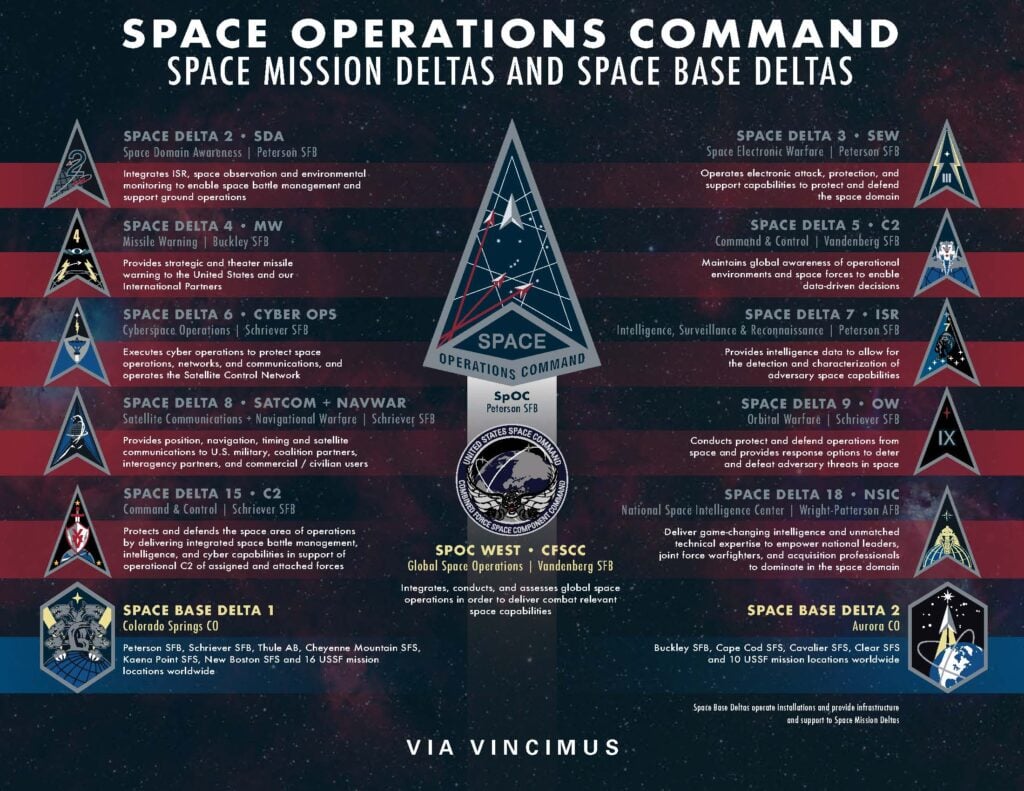
Space Operations Command organizational chart (Space Force)
Commercial Services: Integrating Analytics, Decision-Making Tools
Noting that the service’s long-awaited commercial space strategy is “going to be released in the near-term,” Miller said he is “all in” where “commercial can provide operational utility, mission resilience and/or timely reconstitution and backstopping for core capability.”
In particular, he mentioned the utility of commercial space services for improving space domain awareness — to include not just obtaining data from space-monitoring sensors, but also “to leverage commercial capability for analytics and interpretation [and] speeding decision cycles.”
Miller explained that SpOC is already making use of “shared awareness tools” to provide a common operating picture of on-orbit threats, and stressed that there is “value” to be found “not just in the hardware” but also in commercial software and applications.
“I think they can help us with planning, visual aids and other information dominance tools. I’d like to leverage some of that,” he said.
Acquisition: Providing Early Input
Miller said that one of the keys to ensuring future readiness is making it possible for SpOC to be involved earlier in the acquisition cycle, rather than only some 18 months prior to delivery of a new system or capability.
“What we’ve learned over time is that is way too late in the acquisition cycle, and that our warfighting experts — whether that’s our mission area experts for space domain awareness, for tracking and targeting, for electro-magnetic warfare, whatever those mission area experts’ requirements are — they need to be involved from the force design all the way through the fielding,” he said.
“And that is something that we are really focusing on over the next couple of months,” Miller said.
This means developing close collaboration with the Space Warfighting Analysis Center today, and down the road with the new Futures Command, “all the way to the fielding” so that “the mission needs, organizational operating concepts, the training venues and opportunities, as well as logistics, sustainment and doctrinal implications of new capabilities are baked in from a warfighter perspective at the force design and it’s not something that we’re trying to focus on in the last 18 months as a system is being prepared for final delivery.”
